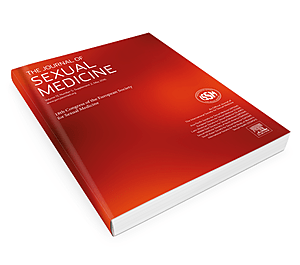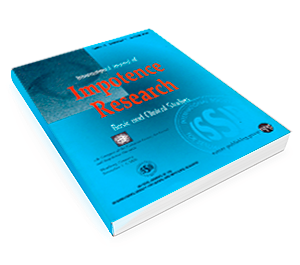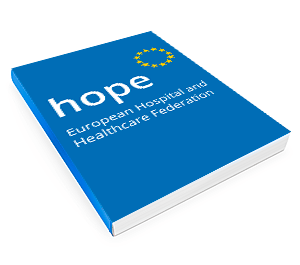Andropeyronie is scientifically tested
Acute Phase Peyronie’s Disease Management with Traction Device: A Nonrandomized Prospective Controlled Trial with Ultrasound Correlation
CONCLUSIONS: Penile traction therapy (PTT) seems an effective treatment for the acute phase (AP) of Peyronie’s disease (PD) in terms of pain reduction, penile curvature decrease, and improvement in sexual function.
The use of a penile traction device reduces the need of cycles of collagenase in patients with Peyronie’s disease
CONCLUSIONS: The combination of the use of a Penile Traction Device with collagenase is useful to reduce the number of cycles achieving similar results to those in the literature, and improving the cost-efficiency of the treatment
Peyronie’s disease and mechanotransduction: an in vitro analysis of the cellular changes to Peyronie’s disease in a cell-culture strain system
CONCLUSIONS: This novel study of cells derived from diseased and normal human tunica albuginea cultured in a mechanical strained environment provides good scientific evidence for the use of penile traction device in Peyronie’s plaque remodeling.
Non-invasive treatment in the management of Peyronie’s disease
CONCLUSIONS: The role of traction therapy in PD is to stop the progression of scarring, recover penile length and girth, reduce curvature, enhance sexual function and ultimately to avoid or simplify surgery
Use of Penile Extender Device in the Treatment of Penile Curvature as a Result of Peyronie’s Disease. Results of a Phase II Prospective Study
CONCLUSIONS: In our study population the penile extender produced improvement in penile curvature. Significant lengthening of the penis both in the flaccid and in the stretched state was also recorded.
Can an External Penis Stretcher Reduce Peyronie’s Penile Curvature?
CONCLUSIONS: These results suggest a promising use of PS [Andropeyronie Penile Stretcher] in selected Peyronie’s patients affected by penile curvature without erectile dysfunction.
Safety and feasibility of platelet rich fibrin matrix injections for treatment of common urologic conditions
RESULTS: In patients with PD with subsequent follow-up, 80% (4/5) initially reported subjective improvement in their degree of curvature.
Non-invasive treatment in the management of Peyronie’s disease
CONCLUSIONS: Currently, it is likely, in the context of nonsurgical treatments, that a multimodal approach, for example, combination of mechanical therapies and CCH, is the most suitable way forward in managing this condition.
Review of Management Options for Active-Phase Peyronie’s Disease
CONCLUSIONS: Penile traction therapy may improve patient outcomes.
Penile Stretching as a Treatment for Peyronie’s Disease: A Review
CONCLUSIONS: Penile stretching is an effective therapy for PD. Data from limited trials suggest a role for PTT and VEDs in the management of PD, although further research is needed.
The Effect of Adjunct Mechanical Traction on Penile Length in Men Undergoing Primary Treatment for Peyronie’s Disease: A Systematic Review and Meta-analysis
CONCLUSIONS: PTT may be a promising technique to reduce length loss in men undergoing PD treatment. Future work should be done to determine the ideal timing and subpopulations who would benefit from PTT.
Effect of Penile Traction and Vacuum Erectile Device for Peyronie’s Disease in an Animal Model
CONCLUSIONS: Various benefits can be observed with the TD and VED for the treatment of PD.
Analysis of our results in the treatment of Peyroniés disease with Clostridium histolyticum collagenase and modeling using penis extender
CONCLUSIONS: CHC injections and modeling in PD reduced the curvature of the penis. It is a treatment that may avoid penile surgery for PD in several cases and when necessary, the procedure may be a less invasive surgery.
Penile traction therapy and Peyronie’s disease: a state of art review of the current literature
CONCLUSIONS: The penile traction device is tolerable, has minimal adverse outcome, and men are generally satisfied with the device.
Penile traction therapy for Peyronie’s disease—what’s the evidence?
CONCLUSIONS: In conclusion, level 2b evidence (according to the Oxford Centre for Evidence-based Medicine) suggests that PTT is a tolerable, minimally invasive method for men with PD.
Therapeutic advances in the treatment of Peyronie’s disease
CONCLUSIONS: Traction therapy, as part of a multimodal approach, is an underused additional tool for the prevention of PD‐associated loss of penile length, but its efficacy is dependent on patient compliance.
Evaluation of Oral Pentoxifylline, Colchicine, and Penile Traction for the Management of Peyronie’s Disease
CONCLUSIONS: Altogether, pentoxifylline and colchicine, taken with concomitant PTT, present a potentially convenient, low cost, and effective treatment for penile curvature and plaque resulting from PD.



